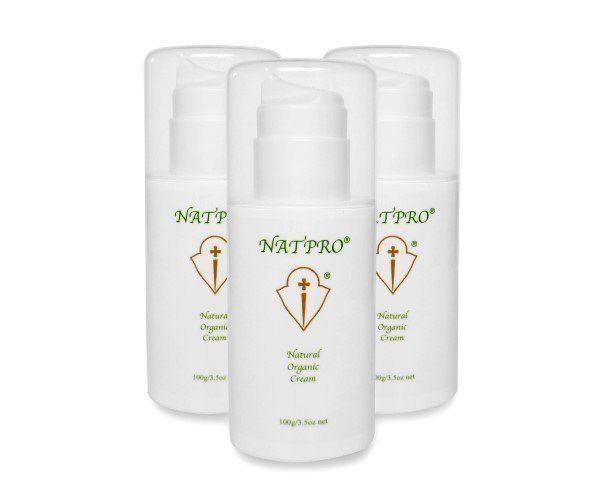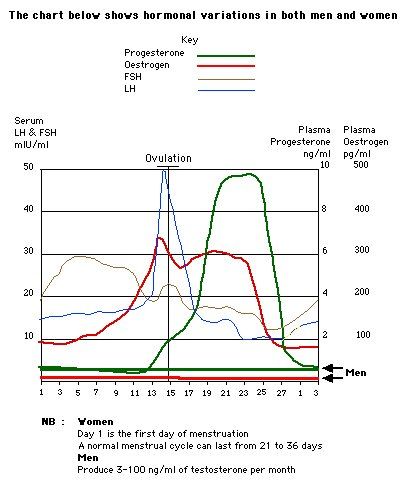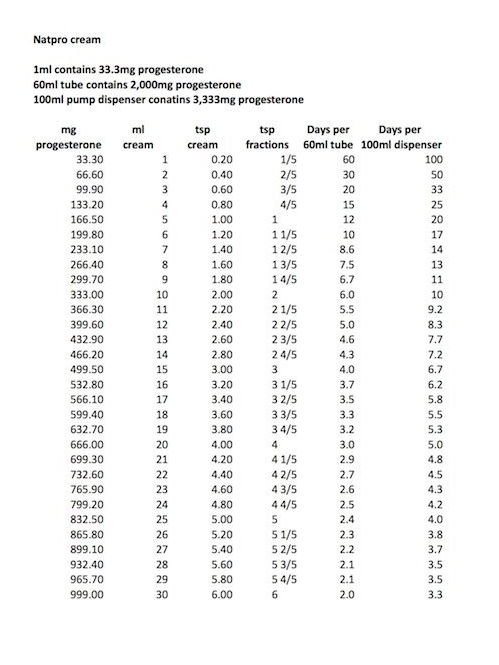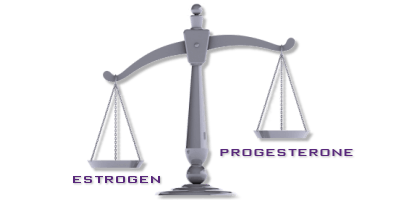HOW TO USE NATPRO PROGESTERONE CREAM
Before using progesterone cream for the first time, please
read these pages - First Time Users, Estrogen Dominance, Vitamin D3 and Magnesium
NOTE: The potency of progesterone creams ranges from 1.5% to 20%. This indicates that a 1.5% cream provides 15mg of progesterone per gram (g) or millilitre (ml), while a 10% cream delivers 100mg per gram (g) or millilitre (ml). Therefore, the required amount of progesterone must be considered in relation to the quantity of cream used. Natpro is a 3.3% cream, which equates to 33.3mg per gram or ml. All information presented here pertains to Natpro.
One of the initial concepts to grasp when starting progesterone is that it isn’t an immediate solution; it can take anywhere from 2 to 6 months, or possibly even longer before positive results are felt. Patience and time are essential! Be prepared for a variety of 'unusual occurrences' as your body adapts. It’s only when progesterone becomes the dominant hormone that improvements will begin to take shape. This transformation may involve alterations in various types of bleeding. Most of these 'unusual occurrences' are symptoms of Estrogen Dominance, and your body will adjust in due course.
Numerous progesterone creams and recommendations suggest applying 20-40mg of progesterone cream daily, but this is INCORRECT. No less than 100mg/3ml is the required amount.
Usually between 100mg/3ml - 200mg/6ml per day is required when using a 3.33% cream. More maybe needed if symptoms are severe. This higher dosage will help prevent adverse symptoms, especially if they are severe. Typically, when initiating the use of progesterone cream, more than 100mg per day is necessary. If the quantity you are currently using is ineffective, or if your symptoms are exacerbating, increase the dosage. Experiment with the cream to find a regimen that works best for you and your specific symptoms. It is important to note that adverse symptoms often intensify before they improve with regular use!
PROGESTERONE SHOULD BE ADMINISTERED NO LESS THAN TWICE DAILY. DO NOT USE IT JUST ONCE A DAY - half in the morning and the other half at night. The reason for this is that progesterone levels start to drop after 12 hours. It is important to keep levels stable at all times.
If you have any questions about Natpro Progesterone Cream
Why use for 2-6 Months when first using Progesterone?
Let’s be honest: our interest in progesterone stems from the ineffectiveness of conventional treatments, which often lead to more harm than good. We're all here because we’ve reached our limit; we want to take control of our hormonal challenges and our health—and rightfully so.
Many individuals looking into progesterone often do so due to experiencing negative symptoms.
- irregular and erratic periods
- heavy/continual bleeding and clotting
- headaches
- unexplained aches and pains
- PCOS/endometriosis/fibroids
- hot flushes/night sweats
- anxiety
The list is extensive. For these reasons, and to effectively balance our hormones, I recommend using progesterone for a duration of 2-6 months, or longer if your symptoms are particularly severe. Why is this important? Because establishing progesterone as the dominant hormone is crucial. Typically, estrogen reigns as the dominant hormone in most individuals unless supplemented with progesterone. Prioritizing progesterone will create the necessary balance; expecting results is futile if your body is not harmonized! Once balance is achieved, progesterone can be utilized according to a regular cycle if you have one. If not, progesterone should be taken daily without interruption. I am currently in my 19th year of progesterone therapy, and I have used it every single day without breaks, and I plan to continue this regimen.
Unless conception is the goal, I would rather see everyone use progesterone continuously, without any breaks. Interruptions lead to a drop in levels, making it a struggle to raise them again, especially since stress depletes progesterone. This also allows estrogen the opportunity to reassert itself. Ultimately, the decision is yours, but I can confidently say there is no harm in using it daily if you have a cycle.
Individuals aiming to conceive or relying on their cycle for guidance should adhere to the recommendations outlined in the instructions below. The starting day for usage hinges on the length of your cycle, such as 28 days or 30 days; please refer to the charts provided below. It is essential to read the First Time Users page.
I frequently receive the question, "My cream has just arrived; when can I start using it?" The answer is IMMEDIATELY unless you prefer to follow your cycle. However, it's important to note that when starting progesterone, it should ideally be used every day for a duration of 2-6 months. Often the body requires this time to adjust to progesterone therapy.

Measuring Natpro Progesterone Cream:
- If you're using a tube (60 grams/2 oz per tube) - measuring Natpro cream with a tube can be a bit confusing for some first-time users. To make things clearer, envision a metric teaspoon, which holds 5ml. The recommended minimum dosage for women is 100mg/3ml per day, which is just slightly over half a teaspoon. Alternatively, think of the size of an almond, which can help you visualize what 1ml looks like. For 100mg/3ml, you'll need approximately three almonds worth, taking 50mg in the morning and again at night, with the option to increase based on your symptoms. A syringe can also be a handy tool for accurate measurement. If you have measuring spoons in your kitchen, just ensure you're using a metric teaspoon. With a little practice, you'll soon be able to estimate what 100mg/3ml looks like. There's no need to worry if you accidentally use a bit too much; issues tend to arise when the dosage falls below 100mg/3ml, potentially leading to estrogen dominance symptoms such as weight gain, water retention, and hair loss. Including a measuring spoon in the package would only raise the product's cost. Further down this page, you will find a conversion chart that details the teaspoon/ml/mg conversions. Please take the time to read and understand the symptoms of Estrogen Dominance.
- If you're using a dispenser (100 grams/3.5 oz per dispenser) - measuring with a dispenser is significantly simpler. A full pump dispenses 1.5ml (50mg). The minimum required amount is 100mg per day, which equates to two full pumps; you may need more if your symptoms are pronounced.
Mastering the use of progesterone cream is quite simple for women once they grasp its connection to their cycle. For men, it's even more straightforward—anytime, anywhere!
A woman's menstrual cycle can range from as short as 21 days to as long as 36 days, with the average being around 28 days. This variability is why manufacturers of The Pill and Hormone Replacement Therapy (HRT) package their products in 28-day increments.
The guide that follows is also structured around a 28-day cycle. However, please keep in mind that if your personal cycle is longer or shorter, it’s important to adhere to that rather than the average.
To provide some clarity, all women, regardless of their cycle length, typically begin ovulating 14 days prior to the onset of their next menstrual bleeding.
This shows that you should begin applying the cream either at the time of ovulation if you're aware of when that occurs, or 14 days prior to the expected start of your next period. If you do not experience ovulation or have periods, adhere to a 28-day cycle, selecting any day to initiate use.
- A 21 day cycle - Ovulation should occur on day 7
- A 28 day cycle - Ovulation should occur on day 14
- A 36 day cycle - Ovulation should occur on day 21
Many suggest that progesterone cream should be used starting on day 14; however, this assertion is completely inaccurate!
The cream should only be used from ovulation (Luteal Phase) for the last 14 days of the cycle
Grasping the effective use of progesterone cream centers around a key aspect: its application prior to ovulation may hinder the ovulation process. This cream is primarily intended to enhance the body's naturally low progesterone levels, especially during the luteal phase.
The start of the menstrual cycle is indicated by the first day of bleeding. Some women may encounter what is known as a defective luteal phase, where they start bleeding again before the usual 14-day period concludes. This condition can often lead to difficulties in conception or miscarriage. In these cases, administering progesterone might help extend the luteal phase.
Supplemental progesterone typically alleviates food and alcohol cravings, depression, breast tenderness, cramps, fatigue, and irritability that arise just before menstruation.
Please be aware that it is normal to encounter significant bleeding, spotting, or clotting during the first one or two months of using the cream. There is no need for concern, as this is the progesterone effectively eliminating the lining that has built up in the uterus.
The cycle may also be interrupted when using progesterone for the first time. If you experience any spotting, please disregard it and continue applying the cream. Should a full period begin earlier than expected, stop using the cream, recognizing the first day of bleeding as day 1. It’s also possible for bleeding to be delayed by a few days; in such cases, consider the first day of bleeding as day 1. Resume using the cream at ovulation or during the final 14 days of your cycle.
Please be aware: Stress can significantly lower progesterone levels, so if you notice a resurgence of symptoms, it may indicate that you are experiencing a particularly stressful period. The underlying cause is cortisol, the hormone produced in response to stress, which is derived from progesterone. This stress response is a fundamental survival mechanism; consequently, the body will utilize any available progesterone and transform it into cortisol to manage the stress, whether it is acute or chronic. If symptoms reappear, consider increasing your progesterone dosage, then tapering it down once the stressful phase has subsided.
Progesterone cream is the best delivery method - see here. Oral progesterone is wasteful and costly as approximately 96% is destroyed as it passes through the gut and the liver and the dose has to be high which causes drowsiness. Injections are painful, buccal drops or pills are very bitter and suppositories are not much fun!
Ovulation Chart
The amount of progesterone to use depends on symptoms and the severity of them.
- Follicular phase - starts on the 1st day of bleeding and ends at ovulation. No progesterone is used during this time.
- Luteal phase - starts from ovulation until bleeding. It is always, in all women, 12-14 days long. Progesterone is used during this luteal phase.
For contraceptive purposes, deduct 5 to 8 days from the date of ovulation to start using progesterone. Please also read the Pregnancy and Contraceptives pages.
Approximate date of ovulation
| Cycle Length | Day |
|---|---|
| 21 day | 7 |
| 22 day | 8 |
| 23 day | 9 |
| 24 day | 10 |
| 25 day | 11 |
| 26 day | 12 |
| 27 day | 13 |
| 28 day | 14 |
| 29 day | 15 |
| 30 day | 16 |
| 31 day | 17 |
| 32 day | 18 |
| 33 day | 19 |
| 34 day | 20 |
| 35 day | 21 |
Menstruation should start within a day or two of stopping the progesterone

Conversion Chart - Natpro Cream Tube and Dispenser

How to apply NATPRO Progesterone Cream
One of the significant advantages of knowing how to utilize Natpro Progesterone cream is its versatility; it can be applied anywhere—inside the vagina or nose for dryness, on piles/hemorrhoids, on painful or sore areas, on burns (it's remarkable for burns), for insect bites, and it works wonders on the face.
It's essential to keep in mind that progesterone in the form of drops and tablets is largely ineffective, as 96% is distroyed by the gut and liver. The most effective methods of administration are through creams, injections, or suppositories!
Please note:
- Natpro progesterone cream absorbs into the bloodstream in roughly 5 minutes, and even hair follicles effectively take it in, making it suitable for use anywhere on the body..
- It's best to rotate the area daily.
- Natpro progesterone cream is most effective when applied twice daily, as hormone levels begin to decrease after approximately 12 hours. Maintaining optimal levels is crucial, so it’s recommended to divide your chosen daily dose between the morning and evening. Some women opt for a higher application at night and a lower amount in the morning, but each individual should find what works best through personal experimentation.
All successful studies conducted on progesterone suggest a daily dosage of 100-200mg. This translates to 3-6ml of a cream with a 3.33% concentration, like Natpro, each day. Certain studies have explored dosages of 400-600mg per day. Patients dealing with Traumatic Brain Injury (TBI) have been administered as much as 1200mg daily. The late Dr. Kittie Dalton prescribed 2400mg per day for patients experiencing psychosis and 800mg for those suffering from nausea.
When addressing the question of 'how to use progesterone cream,' it's important to note that there is no definitive right or wrong method; the approach varies based on your specific symptoms. The severity of these symptoms will dictate the amount of progesterone required until you reach a stable state, at which point you can consider reducing the dosage.
Women
Menstruating
- If a woman is still experiencing a menstrual cycle, she should apply the cream twice daily starting from ovulation for the next 14 days. Bleeding is expected to occur within a day or two. The luteal phase consistently lasts between 12 to 14 days for all women; if it is shorter, this is referred to as a 'defective luteal phase.' Cycles can range from 21 to 36 days. For instance, in a 21-day cycle, the cream should be applied starting on day 8 for 14 days; in a 28-day cycle, it should be used from day 15 for 14 days; and in a 36-day cycle, the application should begin on day 22 for 14 days - see chart above.
Peri or post Menopausal, Hysterectomy, Oophorectomy, Pre-pubertal, Pubertal
- If there is no cycle or if the cycle is erratic, apply the cream twice daily, every day. A break is unnecessary, despite what some may suggest. Use 100 - 200mg each day, adjusting as needed based on your symptoms.
Severe symptoms
- hot flushes and night sweats, use a minimum of 400-500mg daily for 4-6 days, as this typically alleviates the symptoms. It’s advisable to apply the cream every hour.
- heavy and ongoing bleeding, use 400-600mg per day for 2-6 months, without regard to your cycle. Once the heavy bleeding has ceased, gradually decrease the application of the cream until bleeding resumes, at which point stop using the cream for 14 days. After this pause, restart from day 15 for another 14 days. Over the subsequent months, your natural cycle length will reestablish itself. It is recommended to apply the cream hourly. Often, progesterone requires additional support from nutrients. Please refer to the HEAVY BLEEDING PROTOCOL below.
- other adverse symptoms, use a minimum of 100-200mg per day while adhering to the cycle; higher doses may be required based on the severity of the symptoms. If symptoms reappear during the break, continue applying the cream twice daily or more frequently until they disappear. Once resolved, resume the cycle as before.
What causes progesterone levels to drop?
I regularly receive messages from women who have been using progesterone for some time, stating that their symptoms have returned. A lack of or a drop in vitamin D3 levels, even if a missed dose has taken place, or if lots of time has been spent indoors and not getting enough sun, affects our vitamin D3 levels, which in turn, affects progesterone levels. Stress destroys both progesterone and vitamin D3, amongst many other vital nutrients.
Some Main Reasons that could cause Progesterone levels to drop:
- lack of or drop in Vitamin D3 levels
- high estrogen
- high testosterone
- high LH
- high FSH sugars of any kind
- large meals
- alcohol
- stress
- insulin resistance
- high level of phytoestrogens in the diet
Diet plays a crucial role in our health. Wheat is especially detrimental, and sugar is no exception; in fact, it’s best to minimize all carbohydrates whenever possible.
Heavy/Continual/Spotting - Bleeding Protocol
- 400-500mg NATPRO Progesterone Cream per day.
- 2000mg N-Acetyl-Cysteine (NAC) per day.
- 2000mg Taurine per day.
- 5000iu's Vitamin D3 per day. Co-factors are vital when taking vitamin D3.
- 1000mg Bioflavanoids per day
The Correct Progesterone Concentration
When selecting a progesterone cream, it is crucial to ensure that it has the appropriate concentration of progesterone. The strength of various progesterone creams can range from 1.5% to 10%. For instance, a 1.5% cream contains 15mg of progesterone per gram (g) or millilitre (ml), whereas a 10% cream contains 100mg per gram (g) or millilitre (ml). Therefore, the required dosage of cream should be considered based on the progesterone needed to alleviate symptoms. Natpro is formulated as a 3.33% cream, which equals 33.3mg per gram or ml. All information presented here pertains to Natpro..
It's crucial to examine the ingredients in the cream, as many contain estrogenic properties, such as grapefruit seed extract. Additionally, despite claims of being natural, many creams contain chemical preservatives.
Compounded and other Brand Creams
A quick note on compounded creams and various brands: Most people consider creams to be the optimal choice, especially for men. These products may include ingredients such as liquid paraffin, parabens, phenoxyethanol, sodium lauryl sulfate, propylene glycol, fragrances, artificial colours, and PEG emulsifying waxes, which can sometimes contain dioxane, a known carcinogen. For further details about toxins present in skin creams, refer to Skin Deep. If you decide to use them, ensure they are as natural as possible. Additionally, these creams often come with a mix of estrogen and/or testosterone, which is unnecessary for women. Commonly, an incorrect dosage of 20-40mg is prescribed, and they frequently lack the appropriate concentration of progesterone.
Alternative Progesterone Creams
In the absence of Natpro, we recommend the following five creams as alternatives for progesterone. These creams vary in concentration, so it's important to adjust the quantity used accordingly. You may need to double or slightly exceed the amount typically used with Natpro, so please make the necessary adjustments.
- ProGest
- Renewed Balance
- Life Flo Progesta care
- Progestelle
Depending on the symptoms men should use approximately 10-100mg per day. If symptoms are severe, more maybe needed.
Please see Hormone Testing to find out exactly what your hormone levels should be for both men and women.
How to Reduce NATPRO Progesterone Cream
Once you feel stable and ALL your adverse symptoms have resolved, you can gradually begin to decrease the amount of cream you use. It’s crucial to approach this process SLOWLY—abrupt reductions can lead to a resurgence of your symptoms. If this occurs, simply revert to your previous amount of cream until you regain stability, then attempt to reduce it again slowly. A gradual reduction over several weeks is vital to avoid the return of adverse symptoms.
How to Reduce - reduce by no more than 16-20mg at a time. Stay on that reduced amount for a week, then reduce again by another 16-20mg and so on. Symptoms will return if you reduce by too much and too quickly. NEVER reduce to less than 100mg/3ml per day as all adverse symptoms will return.
Please be aware: that progesterone can be beneficial in cases of deficiency or when excess estrogen is present. Nevertheless, numerous other factors play a role as well. Insufficient levels of Vitamin D3 can diminish the positive effects of progesterone, making it essential to undergo testing. Factors such as large meals, overcast days, winter conditions, elevated adrenaline levels, high blood glucose, excessive dietary phytoestrogens, hormone replacement therapy (HRT), and the contraceptive pill can all negatively influence its effectiveness.
If you have any questions about Natpro Progesterone Cream
Disclaimer: Although this web site is not intended to be prescriptive, it is intended, and hoped, that it will induce in you a sufficient level of scepticism about some health care practices to impel you to seek out medical advice that is not captive to purely commercial interests, or blinded by academic and institutional hubris. You are encouraged to refer any health problem to a health care practitioner and, in reference to any information contained in this web site, preferably one with specific knowledge of progesterone therapy.
Privacy Policy | Sitemap

